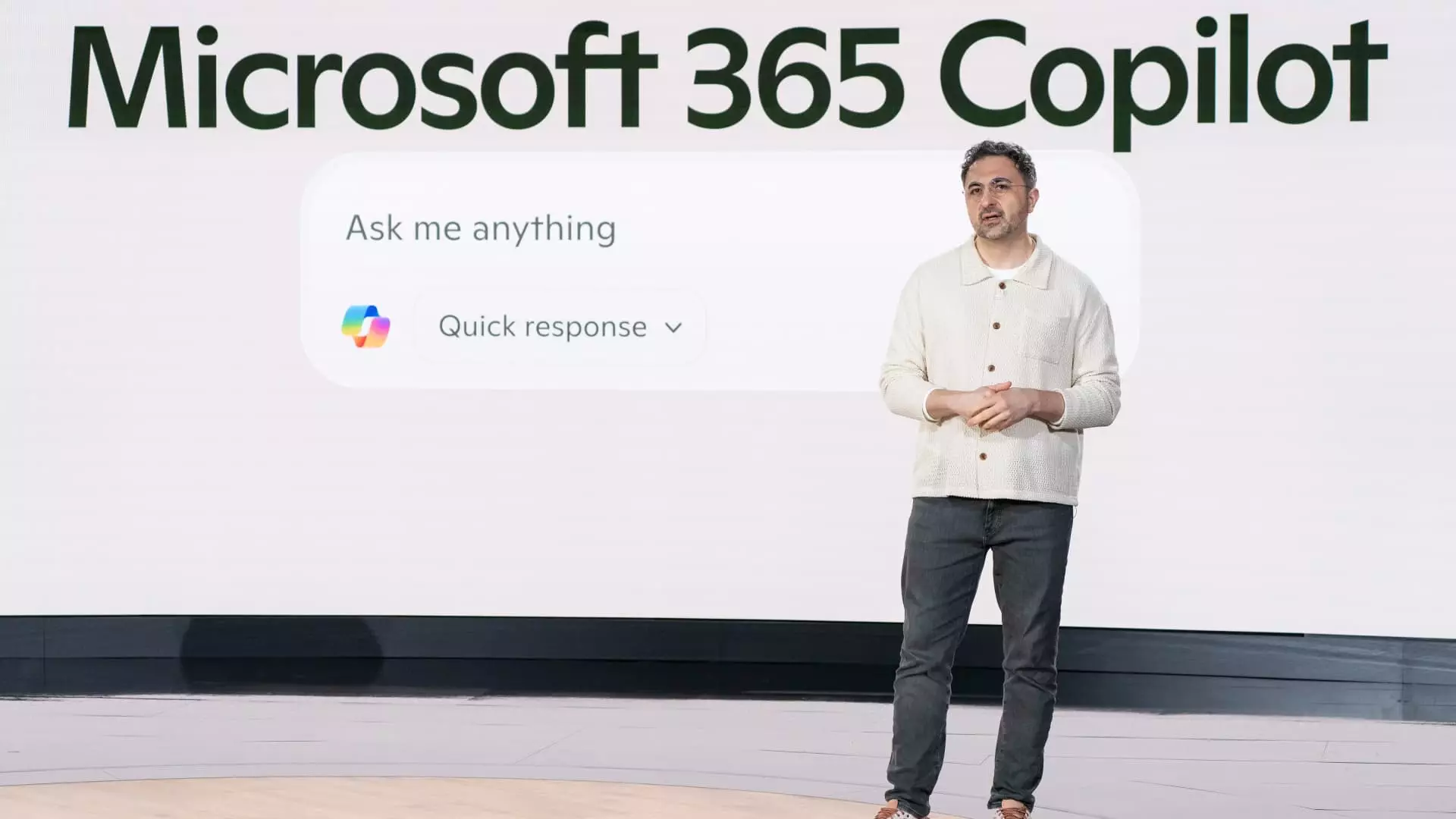In the rapidly evolving landscape of artificial intelligence, Microsoft has chosen an unconventional path. While the company is renowned for its extensive investments in cutting-edge technologies, it has opted not to use its vast array of Nvidia graphics processing units (GPUs) to develop the latest AI models. This counterintuitive approach, as articulated by Mustafa Suleyman, the CEO of AI at Microsoft, centers around playing the long game—a strategy that prioritizes thoughtful development over the frantic race to the forefront of AI innovation. By holding back to observe and learn from the pioneers in the field, Microsoft is positioning itself to deliver more refined, cost-effective solutions aligned with specific use cases, at a fraction of the cost involved in leading the charge.
Rather than indulging in the tumult of competition, Microsoft’s deliberate delay allows it to synthesize knowledge from existing innovations, honing in on targeted outcomes. Suleyman’s metaphor of “off-frontier” perfectly encapsulates this philosophy: it’s not about being the first to create, but being the best at applying what has already been established. This insight raises fascinating questions about the efficacy of impatience in a space often defined by rapid technological advancement.
The Power of Collaboration
Microsoft’s model of success in AI is heavily interwoven with collaboration rather than competition. The partnership with OpenAI, which has been pivotal since the launch of the ChatGPT chatbot, epitomizes this ethos. By leveraging the capabilities of OpenAI and the additional resource capacity from companies like CoreWeave, Microsoft reinforces its position as a symbiotic player in the AI domain. Such relationships provide Microsoft with robust resources while allowing it to focus on optimizing its own applications rather than reinventing the wheel.
OpenAI’s advancements in generative AI train Microsoft to utilize pre-existing frameworks to bolster its tools—such as integrating advanced language models into products like Copilot. As Suleyman references, enhancing Copilot with “memory” is a direct result of learning from OpenAI’s developments. This mutual interdependence highlights the importance of strategic alliances in technological progress, particularly in a realm as resource-intensive as AI.
A Shift in Competitive Dynamics
However, this dynamic hasn’t been without its challenges. Even as both companies flourish under their partnership, the landscape is shifting. By characterizing OpenAI as a competitor, Microsoft acknowledges the inherent risks of dependency. As relationships evolve, particularly with OpenAI exploring alternatives such as a partnership with Oracle for its ambitious Stargate project, it raises significant questions about the long-term implications of such collaborations.
For Microsoft, becoming self-sufficient in AI is paramount. Suleyman’s statement regarding the necessity to develop AI capabilities internally points toward a future where Microsoft reduces its reliance on external partners. By investing heavily in its own AI development—both in terms of infrastructure and talent—Microsoft is likely preparing for a future where competitive advantages are anchored not just in external collaborations but also in proprietary advancements.
The Road Ahead: Integrating Innovations
Looking to the future, Microsoft’s AI journey is one of careful navigation through the complexities of innovation, competition, and internal growth. Suleyman’s remarks about balancing the need for immediate advancements with a perspective focused on five- to ten-year goals signal a strategic foresight that is crucial in today’s volatile tech landscape. The decision to prioritize both leading-edge models and distinctive features within the existing framework offers a nuanced approach to AI that values both agility and robustness.
This perspective is especially relevant as AI technology moves beyond mere tools, evolving into systemic players in businesses. The carefully balanced approach Microsoft is taking today might very well influence the norms of technological development in the coming years. In a world where instant gratification often overshadows strategic planning, Microsoft’s method stands out as a testament to resilience and foresight in technological evolution.
With each new iteration of AI tools and processes, Microsoft is not merely responding to the market; it is shaping it, finding its unique voice amid a chorus of competing innovations—securing its legacy while simultaneously redefining its future.


Leave a Reply